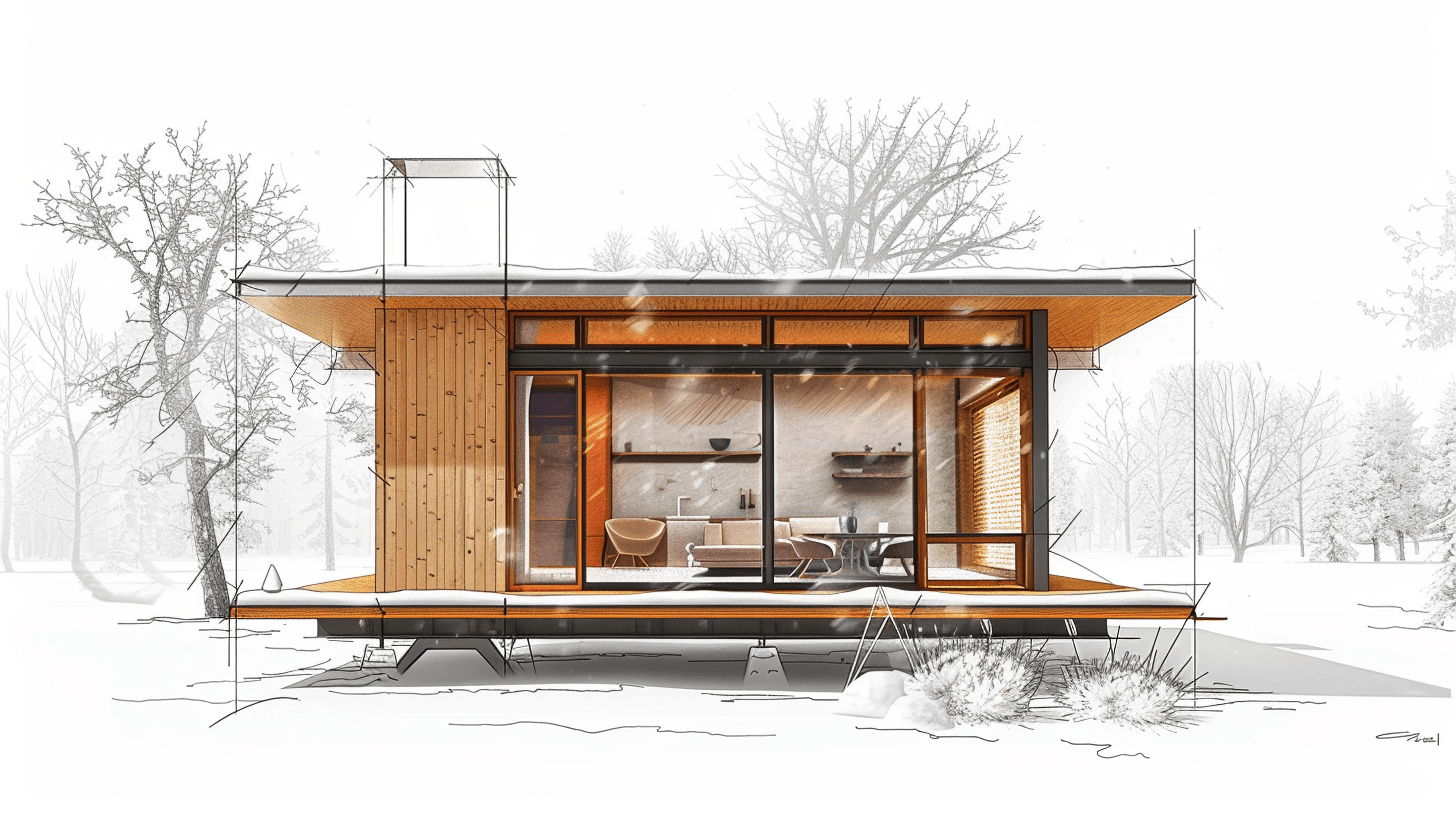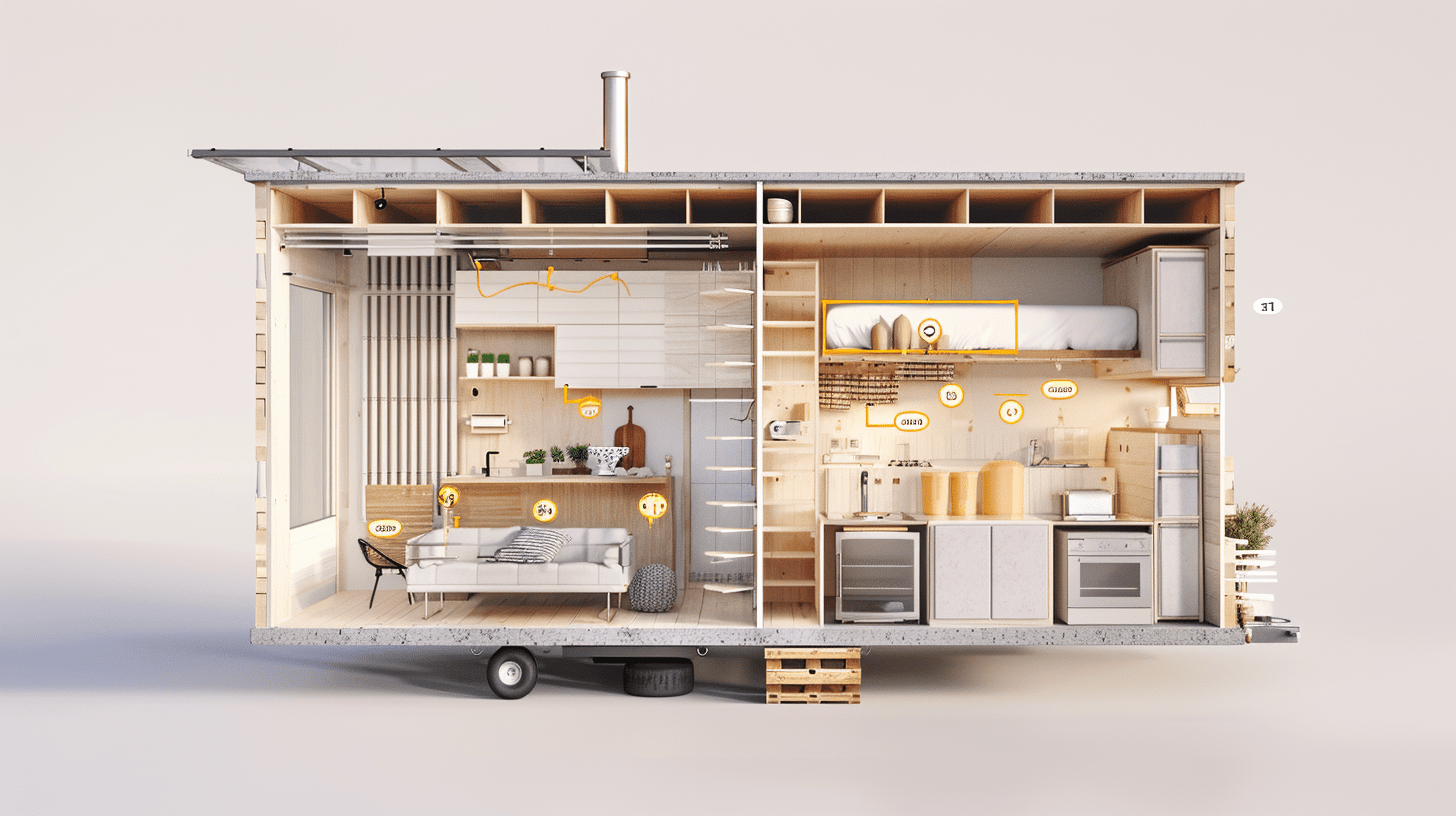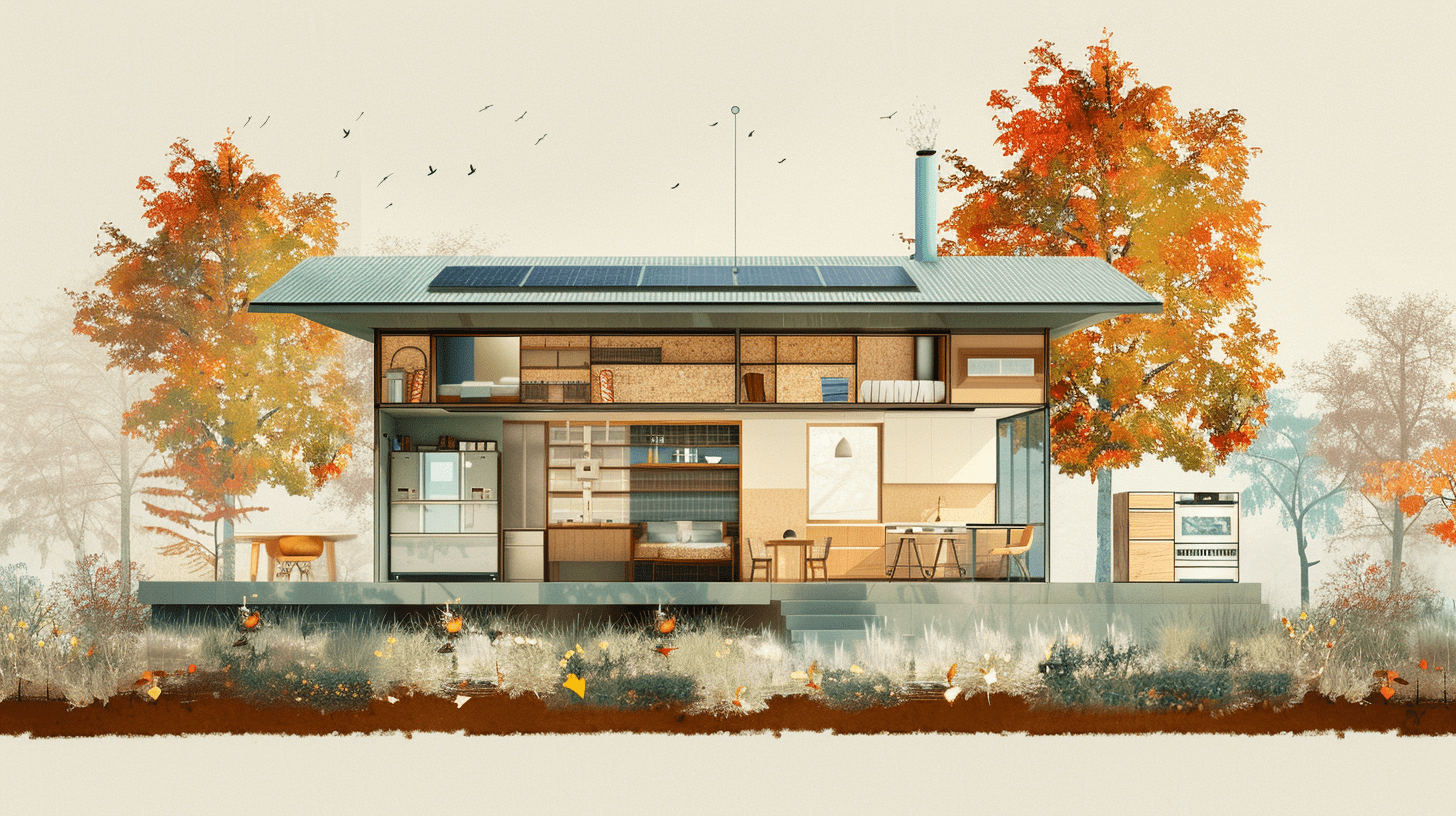Imagine you’ve just installed spray foam insulation in your tiny home, significantly reducing your heating bill during the first winter. This scenario underscores the pivotal role of insulation in enhancing energy efficiency, especially in smaller living spaces where every bit of energy conservation matters.
By selecting the right type of insulation, you’re not only creating a more comfortable habitat but also contributing to a larger environmental cause. However, the choice of material and the method of installation can dramatically affect the outcome.
Let’s explore how optimizing insulation can lead to substantial energy savings and why overlooking this aspect could mean missing out on key benefits.
Understanding Insulation Significance
Grasping the importance of insulation is pivotal in maximizing energy efficiency and ensuring your tiny home remains cozy all year round. Insulation is your best ally in reducing heat loss, a critical factor that, if overlooked, can lead to increased energy consumption and higher bills. By properly insulating your space, you’re directly impacting how indoor temperatures are regulated, significantly minimizing the need for constant heating or cooling. This not only contributes to notable energy savings but also fosters a comfortable living environment regardless of the season.
Insulated walls are at the forefront of preventing unwanted heat transfer, enhancing the overall energy efficiency of your tiny home. They act as a barrier, keeping the cold out during winter and the heat at bay in summer, ensuring you’re not overworking your heating or cooling systems. Moreover, choosing climate-specific insulation can further optimize your energy use, tailoring your home’s ability to retain or repel heat based on your geographic location. This strategic approach to insulation doesn’t just promise a reduction in energy consumption; it guarantees a snug and sustainable living space tailored to your needs.
Types of Insulation Explored
Understanding the importance of insulation paves the way to exploring the various types available for your tiny home, each with its unique benefits for energy efficiency. Let’s delve into the types of insulation that can maximize your tiny home’s thermal performance and energy efficiency.
| Insulation Type | Key Benefits |
|---|---|
| Spray Foam | High R-values and excellent air sealing properties |
| Fiberglass | Cost-effective with good thermal performance |
| Reflective Insulation | Reflects heat away, reducing energy consumption |
Spray foam insulation is a standout for tiny homes, offering superior air sealing and high R-values, critical for energy efficiency. It’s a versatile option, fitting into nooks and crannies to prevent energy leaks.
Fiberglass insulation, a common choice, provides good thermal performance at a lower cost. It’s widely used in walls and attics, contributing to energy savings without breaking the bank.
Reflective insulation, or radiant barriers, work by reflecting heat away from your living space, a unique approach to maintaining comfortable temperatures and reducing energy needs.
Other noteworthy options include cellulose insulation, made from recycled paper products, offering thermal resistance and eco-friendliness. Sheep’s wool insulation, with its natural moisture-wicking and excellent thermal performance, is a sustainable choice for those prioritizing green living in their tiny homes.
Insulation and Energy Savings
By properly insulating your tiny home, you can slash energy consumption by up to 50%. This substantial reduction is achieved by addressing several critical areas through which energy efficiency is either gained or lost.
Here’s how insulation directly contributes to energy savings in your tiny living space:
- Maintains a Consistent Indoor Temperature: Insulation acts as a barrier to keep your home warm during the winter and cool in the summer. This consistency means you’ll rely less on heating and cooling systems, directly reducing energy consumption.
- Requires Smaller HVAC Systems: With effective insulation, your home won’t need large HVAC systems to maintain comfort. Smaller systems consume less energy, leading to further savings on your utility bills.
- Minimizes Heat Loss and Gain: The right insulation materials can significantly reduce heat transfer. This means less energy is required to maintain your desired indoor temperature, enhancing overall energy efficiency.
- Cuts Down Utility Bills: By optimizing the performance of your insulation, you can see a significant reduction in your monthly utility bills. Less energy used equals more money saved.
Incorporating high-quality insulation materials into your tiny home is a strategic move to reduce energy consumption, ensure a consistent indoor temperature, and ultimately lower your living costs.
Installation Best Practices
Having explored how insulation contributes to energy savings, let’s focus on the best practices for its installation in your tiny home. Properly sealing all gaps and seams during insulation installation is key to preventing air leaks, a crucial step towards maximizing energy efficiency. But it’s not just about keeping the cold or heat out; adequate ventilation is equally important. It helps maintain indoor air quality and prevents moisture buildup, both vital for the effectiveness of your insulation.
Considering the climate conditions your tiny home will face is essential when installing insulation. This foresight ensures that the material you choose performs optimally, whether it’s battling the scorching heat or bracing against the cold. Moisture control is another pillar of successful insulation techniques. By preventing moisture intrusion, you’re not just dodging mold growth but also preserving a healthy living environment.
Adhering to these best practices during insulation installation doesn’t just promise energy savings; it significantly boosts the comfort levels within your tiny home. Remember, it’s about creating a balance between sealing off unwanted air leaks, ensuring proper ventilation, and considering the climate and moisture control. Get these right, and you’re on your way to a snug, energy-efficient tiny home.
Eco-Friendly Insulation Options
Exploring eco-friendly insulation options can significantly enhance your tiny home’s energy efficiency while minimizing environmental impact. You’re not just choosing materials that keep your home warm or cool; you’re investing in solutions that are better for the planet.
Let’s dive into some of the best options available:
- Sheep Wool Insulation: This sustainable choice not only offers excellent thermal performance but is also renewable. Its natural fibers provide a cozy barrier against the cold, making your tiny home both warm and environmentally responsible.
- Denim Insulation: Imagine recycling your old jeans into something that keeps your home energy-efficient. Denim insulation is made from recycled blue jeans, making it a renewable and non-toxic option. It’s a creative way to reduce waste while insulating your space.
- Polystyrene Insulation: For those seeking high R-values and moisture resistance, polystyrene insulation is a go-to. Although not as natural as sheep wool or denim, it’s incredibly efficient, offering durability and energy savings for your tiny home.
- Fiberglass Insulation: Common for its affordability and versatility, fiberglass is effective in reducing heat loss. While not the most eco-friendly on the list, it’s still a viable option for many, due to its effectiveness and cost-efficiency.
Climate Adaptation Strategies
Selecting the right insulation for your tiny home hinges on understanding the climate it’ll face, ensuring you stay cozy and energy-efficient year-round. Climate adaptation strategies play a pivotal role in this process. By choosing insulation materials that are best suited for the specific weather conditions of your location, you can significantly enhance your home’s ability to regulate indoor temperatures effectively. This is crucial for adapting to varying climate conditions, which can range from extreme cold to sweltering heat.
Proper insulation is your best defense against unwanted heat loss during cold spells and heat gain during hot periods. It’s all about preventing the outdoor weather from dictating your indoor comfort levels. By implementing effective insulation strategies, you’re not just ensuring a comfortable living environment; you’re also taking a giant leap towards reducing your energy consumption. Heating and cooling a tiny home can become a major energy drain if not managed properly. But with the right insulation materials, tailored to handle climate variations, you can achieve remarkable energy efficiency. This not only cuts down on your energy bills but also boosts the overall comfort and sustainability of your tiny home.
Conclusion
In conclusion, you’ve learned that proper insulation is key to maximizing energy efficiency in your tiny home. By choosing the right materials, like spray foam, fiberglass, or cellulose, and following best installation practices, you’re not just cutting down on energy costs but also creating a cozier living space.
Don’t forget to consider eco-friendly options and adapt your insulation strategy to your climate. This way, you’re ensuring a sustainable, comfortable, and cost-efficient tiny home for years to come.



